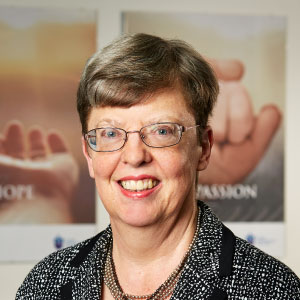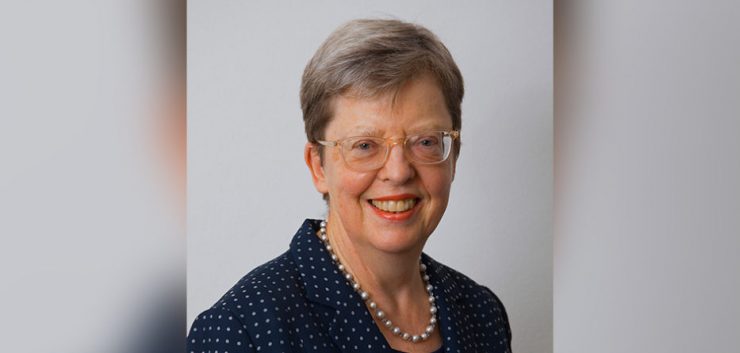This article is reposted from Catholicoutlook.com and has been provided by the author.
Response to the Dom Helder Camara Lecture
“Some Reflections on the Coming Plenary Council of the Church in Australia”
Parkville, Victoria, 30 June 2021
It is a privilege to share a platform with Bishop Vincent Long. I got to know Bishop Vincent when he was an Auxiliary Bishop in Melbourne and, over the years, I have admired his advocacy and action for the disadvantaged. He is able to bring to tonight’s reflections on the journey to the Plenary Council (and, in general, to what he says and writes) the authenticity of his own journey, including as a boat person. He also brings the lens of being the first Asian-born bishop in Australia.
Quite a long time ago, I was invited to respond to another then-Melbourne Auxiliary Bishop who had titled his paper “The Faith of Our Fathers”. In my response, I spoke about the faith of our mothers. I think that the Church in Australia has come quite a long way since that time and it is people like Bishop Vincent who have led in that journey. However, as our listening, dialogue and discernment processes leading up to the Fifth Plenary Council have shown, we still have a way to go! Bishop Vincent has given us insights into the issues and ways forward.
My remarks this evening are informed by my role as chair of the Australian Catholic Council for Pastoral Research, which oversees the work of the National Centre for Pastoral Research. The latter analysed the input from those 220,000+ people who participated in Phase I of the Plenary Council, contributing some 17,500 submissions. This Listening and Dialogue process sought to gain a ‘sense of the faith’ (sensus fidei) from Australian Catholics.[1] The responses revealed deep hopes, questions and diverse yearnings from across our Church; we ‘took the temperature’ of the Australian Church in an historic way. Not since the 1990s Women in the Church project has there been such an extensive study within the Australian Church. Subsequent work has looked at the degree to which the recommendations of its report, Woman and Man: One in Christ Jesus,[2] were realised and I think that it is fair to say they were actioned only in a limited way. We need to do better on this occasion.
I want to talk, from personal experience, about two particular developments in the Australian Church which I see as examples of the transformation that we need in going forward, namely establishment of the ministerial public juridic persons and of the Emerging Futures Collaborative. These are just two examples and you will know of others. Significantly, the two developments reflect the baptismal call which we all share and the ‘resourcefulness’ which, under the guidance of the Holy Spirit, can shape the future of the Australian Church.
Contemporary Australian Context
Firstly, what is the contemporary Australian context of the journey to the Plenary Council? Like Bishop Vincent, I note diverse factors which have impacted on the Church – both positively and negatively: the Royal Commission into Institutional Responses to Child Abuse, the providential election of Pope Francis to lead our Church, the decline in vocations to the priesthood and religious life, the Australian Catholic Bishops Conference and Catholic Religious Australia’s governance review leading to the Light from the Southern Cross report, extensive formation of lay people for ministry, growth and development of the Catholic universities and theologates, and most especially, the three years of purposeful preparations for the Plenary Council.
Much has changed for the Church in recent decades – even before the pandemic, Mass attendance was down to below 10 per cent in about half our dioceses with the age profile of attendees older and a doubling of those born in non-English-speaking countries. Women continue to remain at over 60 per cent of attendees. A decade ago, the predecessor of the National Centre for Pastoral Research, the Pastoral Research Office, noted that we had reached a critical moment regarding Mass attendance in Australia and that an extraordinary event or events would need to occur before we witnessed a reversal–or even a plateau–of the declining attendance trends. The ongoing journey to the Plenary Council is such an event or better a process seeking to reignite the engagement of Catholics with their Church. Many parishes and dioceses are redoubling their efforts in the areas of evangelisation and pastoral ministry. It remains to be seen if these initiatives will bear fruit in the years ahead and make a discernible difference.[3]
Ministerial Public Juridic Persons
Let me now consider the ministerial public juridic persons or PJPs. Most of our hospitals, a substantial percentage of Catholic aged care, a large number of our schools especially secondary colleges as well as some of the Church’s community services are now conducted by so-called ministerial public juridic persons (PJPs). Most of you would know the various new Church entities involved – for example, Good Samaritan Education, St John of God Health, Edmund Rice Education Australia, Calvary Ministries and so on.
Fr Charles Bouchard OP wrote in 2019: “Granting canonical authority for a ministry of the church to a group of lay people has been a very significant development … unprecedented in the history of the church”. Further, the significance of this development is still virtually unknown to most Catholics. He continued: The emergence of these entities, he continued, “is a kind of church reform—not the kind of reform required and resulting from corruption or scandal, but the kind that comes from the need for adaptation to changing circumstances; in this case, the increased awareness of the baptismal dignity of all the faithful, and the diminished presence of the founding communities … In his 1950 book True and False Reform in the Church, the Dominican theologian Yves Congar maintained that authentic church reform usually begins on the margins and is gradually incorporated into the heart of the church”. This is certainly true for the new ministerial PJPs. “Rome did not decide to create a new structure to sponsor these institutions. Rather, the initiative came from the original religious sponsors of the hospitals that eventually became the Catholic Health Care Federation [in the United States]. They made innovative use of existing canon law; their idea was approved by the church and has been replicated many times since, effectively incorporating it into the life of the church”.[4]
Significantly, ministerial PJPs have opened up explicit formation of lay people for ministry on a scale not seen previously, as have other non-canonical initiatives like Jesuit Education Australia and Loreto Ministries. The PJP trustees, canonical stewards, councillors, as variously titled, are very much aware that they are responsible for ensuring that the ministries remain works of the Church and take their commitment to formation seriously. Canonical roles have been extended in a new way from bishops, priests and religious leaders and their councils to the laity. Australia currently has 11 and potentially later this year 12 ministerial PJPs and the first Association of Ministerial PJPs internationally.
The Emerging Futures Collaborative
My second example is the Emerging Futures Collaborative (EFC) Ltd, which has grown out of an initiative of Catholic Religious Australia to support congregations in Australia coming to fulfilment and there are dozens of these. The Collaborative will contribute to re-imagining the expression of the universal charism of religious life, focusing on emerging issues for the living and governance of religious life as it is evolving in Australia. It represents an Australian response to Pope Francis’s hope “for a growth in communion between the members of different Institutes … and [his call for them] to work together, at the local and global levels”. This, he says, “would make for a more effective prophetic witness”.[5]
In February 2020, the Catholic Religious Australia Council appointed a 9-person Transition Committee comprising religious and lay colleagues who were charged with the responsibility to develop an initiative for providing the necessary services and supports for religious institutes in transition to completion. Recently, it was agreed that this would be a new company, Emerging Futures Collaborative Limited: A Ministry of Religious Institutes in Australia. Work has just been completed to register and initiate the company. Eight religious institutes have become the founding company members – some large congregations like the Sisters of St Joseph and the Christian Brothers which are not imminently reaching conclusion; others smaller religious institutes which will be receiving the Collaborative’s services. In line with the signs of the times, one of the religious institutes has appointed me as its member representative on the company; I am currently the only ‘non-vowed’ person in this role.
Three congregations will start receiving the services of the Collaborative in coming months. For participating religious institutes, it will facilitate the provision of shared services and, when requested, assist in the identification of possible Canonical Delegates and Consultors, for appointment by the competent Ecclesial Authority. The Collaborative’s services will be tailored to the needs and support agreement with each participating congregation. Collaborative partnerships will underpin its development and become an expression of the new possibilities for mission, apostolic religious life and communion generated through the Emerging Futures Collaborative.
Concrete Proposals
Having illustrated that new models for realising the mission in Australia are achievable, I now move to the Plenary Council agenda.[6] It calls for those attending the assemblies to “develop concrete proposals to create a more missionary, Christ-centred Church in Australia”. Significantly, the preamble to the agenda draws on Pope Francis’ “dream of … a missionary impulse capable of transforming everything, so that the Church’s customs, ways of doing things, times and schedules, language and structures can be suitably channelled for the evangelisation of today’s world rather than for her self-preservation”. [7]
A plenary council has authority (subject to approval by the Holy See) to issue particular laws for the Church in Australia. What might be some of the “concrete proposals to create a more missionary, Christ-centred Church”, and potentially requiring new Church laws?
- I think that we need an ‘Australianisation’ of the Church in its liturgy, structures and practices. I am mindful of the words of Pope St John Paul II in 1986. He said: “… the Church … in Australia will not be fully the Church that Jesus wants her to be until [Indigenous Australians] have made [their] contribution to her life and until that contribution has been joyfully received by others”.[8] In light of increased recognition of the demographic and social realities of the contemporary Church, we should augment this with the contributions of all those various communities to realise a vibrant Australian Church. We must journey forwards to a new era of an inclusive and safe
- We need increased participation of the laity and particularly women in Church leadership, governance and decision-making. Such roles also need to reflect better the increasingly multicultural make-up of those active in the life of the Church. At the same time, we need to look at new structures and processes reflecting accountability, transparency and inclusiveness, to overcome clericalism, as highlighted by Bishop Vincent.
- We need what I will call ‘modernisation’ of Church law – in at least some areas Canon Law has not kept up with developments in the Church and society. For example, despite the extent of Church ministries now under the ministerial public juridic persons, I understand that they have only one PJP Member in the 280 at the Plenary Council assemblies. They need greater recognition.
- Pope Benedict XVI highlighted that the Church has three areas of ministry: the sacraments, the Word and what he called the ministry of Charity, namely our education, healthcare, community and other services. That third ministry of the Church is inseparable from the other two.[9] Through the Plenary Council, we need to ensure that our ministerial endeavours are ‘in tune’ with what Pope Francis has termed the “change of era”.
- While technology might not be the ideal way to bring communities together, it can be very effective when no other option is available, as we have seen during the pandemic. Australia with its vast distances and shortage of priests might look at ways of continuing creatively to minister to those who cannot gather in person due to distance, lack of mobility and so on. Providing access to liturgies, prayer and discussion groups, community gatherings, adult education, medical and counselling services and the like proved viable and enriching for those gathered when the Church threw open its doors ‘virtually’ last year. Let us continue to be creative!
Our Plenary Council journey was disrupted by the COVID-19 pandemic. Did it cause us to lose momentum or, with the fullness of time, will we look back and realise that the consequently extended period of discernment and preparation better ‘equipped’ the Australian Church to “put out into the deep” (Luke 5:4)? One development that the virtual Church of the pandemic enabled was improved application of technology. The so-called ‘new normal’ in Australia means that the first Plenary Council Assembly will take place in five city hubs linked by videoconferencing. When the Members at the assembly are participating together in the plenary sessions, these will be livestreamed, allowing those who are not Members to hear how the Assembly is unfolding. This access to the Plenary Council sessions may not have eventuated had COVID-19 not led us to innovative solutions in order to be able to continue to gather and worship.
In conclusion, I congratulate Newman College on this evening’s Heldar Camara Lecture which adds to the synodal processes of the Plenary Council. We have been preparing for this historic journey by listening to the Spirit and listening to one another’s stories of faith. This evening is another occasion to listen and discern and there are attendees here who will be at the Plenary Council assemblies.
As we move towards the first Assembly of the Plenary Council, let us pray in the words of Job that God will pour out his Spirit on all people; our young people will prophesy, our elders will dream dreams; our youth will see visions [Job 2:28] and the Australian Church will be transformed and renewed.
[1] In Evangelii Gaudium, Pope Francis reminded the Church of traditional teaching on this concept: “As part of his mysterious love for humanity, God furnishes the totality of the faithful with an instinct of faith – sensus fidei – which helps them to discern what is truly of God”. Pope Francis (2013) Evangelii Gaudium – On the Proclamation of the Gospel in Today’s World, n. 119; accessed at www.vatican.va/.
[2] M. Macdonald, P. Carpenter, S. Cornish, M. Costigan, R. Dixon, M. Malone, K. Manning and S. Wagner (2009) Woman and Man: One in Christ Jesus – Report on the Participation of Women in the Catholic Church in Australia, Sydney: HarperCollinsReligious; accessed at https://women.catholic.org.au/woman-and-man/60-woman-and-man-one-in-christ-jesus-full-version/file.
[3] National Centre for Pastoral Research (2000) The Australian Catholic Mass Attendance Report 2016; accessed at https://ncpr.catholic.org.au/wp-content/uploads/2020/12/Mass-attendance-in-Australia-2016-Final.pdf.
[4] C. Bouchard (9 November 2019) ‘Making Ministry Whole: How ‘ministerial juridic persons’ could transform the Church’; accessed at https://international.la-croix.com/news/religion/making-ministry-whole/11220.
[5] Pope Francis (2014) Apostolic Letter to All Consecrated People on the Occasion of the Year of Consecrated Life, n. 3; accessed at www.vatican.va/.
[6] For the agenda, see https://plenarycouncil.catholic.org.au/wp-content/uploads/2021/06/Plenary-Council-Agenda.pdf.
[7] Pope Francis (2013) Evangelii Gaudium, n. 27
[8] Pope St John Paul II (1986) Address to the Aborigines and Torres Strait Islanders in Alice Springs, n. 13; accessed at https://www.vatican.va/content/john-paul-ii/en/speeches/1986/november/documents/hf_jp-ii_spe_19861129_aborigeni-alice-springs-australia.html.
[9] Pope Benedict XVI (2005) Encyclical Letter: Deus Caritas Est – God is Love, n. 21-22; accessed at www.vatican.va.
The Dom Helder Camara Lecture by Bishop Vincent Long OFM Conv, Bishop of Parramatta on the 30 June 2021 at Newman College, Parkville Victoria, can be found here.

Professor Gabrielle McMullen AM FRACI is Deputy Chancellor at the University of Divinity.
Following postdoctoral research in Germany, Professor Gabrielle McMullen joined the Department of Biochemistry at Monash University and also became Dean of its Catholic residence, Mannix College, in 1981. She was then Rector of Australian Catholic University’s (ACU) Ballarat campus from 1995-2000 and its Pro- and Deputy Vice-Chancellor (Academic) until February 2011. In July 2011 she was appointed a Trustee of Mary Aikenhead Ministries, which was established by Sisters of Charity of Australia in 2009 to continue their health and aged care, education and social service ministries.
Professor McMullen is a member of the Council of the University of Divinity and also of the Council of the Divine Word University in Madang, Papua New Guinea. Her other community contributions have encompassed membership of education, health, theological and community services boards. A member of the Australian Catholic Council for Pastoral Research, her personal research interests include Catholic identity and mission, and the history of science.







Add comment